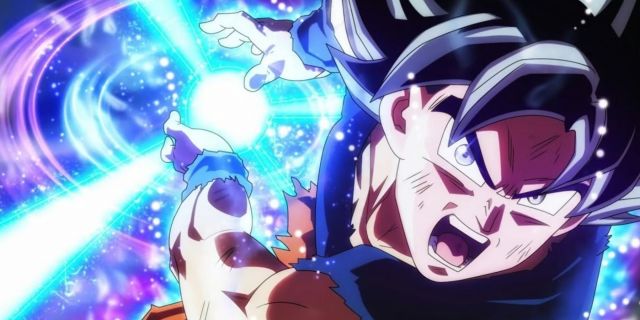Highlights
- Power levels are initially measured using scouters in Dragon Ball Z, but as the series progresses, characters can sense and perceive power without devices.
- Power levels become less emphasized as the series progresses, with transformations and abilities like Super Saiyan God and Super Saiyan Blue adding complexity to power dynamics.
- Transcendent power levels like Super Saiyan God and Super Saiyan Blue go beyond traditional measurements, showcasing characters reaching extraordinary levels of power. Ultra Instinct is a rare and difficult-to-attain level of fighting ability.
“It’s over 9000” is one of the most well-known quotes from Dragon Ball Z. During the Saiyan Saga, Vegeta, one of the primary antagonists at the time, uses his scouter to measure Goku’s power level during their battle.
When Vegeta detects a rapidly increasing power level, he is shocked and yells, “It’s over 9000!” Power is one of the most important components in the series as it helps characters better understand their strength and the strengths and limits of their opponents. However, as the series progresses, power levels become less prominent. But, what are they, and how do newer transformations like Super Saiyan God and Super Saiyan Blue measure up?
Power and How It Is Measured
In the Saiyan Saga, characters use devices called scouters to measure power levels. These scouters analyze the energy emitted by a person and assign it a numerical value, which is considered their power level. Power levels are measured in units, and the scale is logarithmic – meaning that the difference in power between two levels is not linear. Power is also known as ki in the Dragon Ball universe.
As the series progresses, fighters in the Dragon Ball universe can sense and perceive the power or ki of other beings without the need for scouters. This includes transformations or power-ups, to estimate increases in power. However, many fighters can control and suppress their ki to hide their true power level. This makes it challenging for opponents to accurately assess their strength. Characters like Goku and Vegeta become adept at suppressing their power as the series progresses.
Power Throughout the Series

Throughout the Dragon Ball series, the concept of power levels evolves. Initially crucial during the Saiyan Saga, power levels play a central role in measuring characters’ strengths. However, as the series progresses into the Frieza Saga, Android Saga, and beyond, the emphasis on power levels diminishes, giving way to more nuanced elements like suppressed power, transformative abilities, and god-like forms, as seen in Super Saiyan God and Super Saiyan Blue in Dragon Ball Super.
Saiyan Saga

The arrival of Raditz and the subsequent battles against Nappa and Vegeta highlight the significance of these numerical representations of strength. Goku’s power level experiences a profound and dramatic increase as he confronts these formidable Saiyan adversaries, laying the groundwork for the exploration of power scaling throughout the series.
Frieza Saga

In the Frieza Saga of Dragon Ball Z, power levels remain crucial, exemplified by the Ginyu Force’s arrival on Namek. The introduction of these formidable fighters underscores the significance of power disparities in the series. Goku’s transformation into a Super Saiyan during his battle against Frieza not only marks a pivotal moment in the narrative but also showcases a substantial surge in his power level, demonstrating the transformative nature of the Saiyan race.
Android Saga and Beyond

The Android Saga introduces the concept of suppressed power and the ability to hide one’s true strength. Power levels become less emphasized as the series progresses, with characters unlocking new transformations and abilities. The introduction of Super Saiyan transformations adds complexity to the power dynamics. Super Saiyan, Super Saiyan 2, and so on, exponentially increase a character’s strength.
Cell Saga and Buu Saga

In the Cell Saga, Gohan’s power is crucial, leading to his transformation into Super Saiyan 2 during the battle against Perfect Cell. In the Buu Saga, Vegeta’s sacrifice and Goku’s strategic use of transformations, including Super Saiyan 3 and Fusion, exemplify their evolving strengths. Gohan’s return and attainment of the Ultimate form further emphasize the characters’ continuous growth and the dynamic exploration of power levels in Dragon Ball Z.
God Forms and Beyond

In Dragon Ball Super, transcendent power levels with god-like transformations like Super Saiyan God and Super Saiyan Blue are introduced. These forms, achieved through divine rituals and advanced Saiyan evolution, signify a departure from traditional power level measurements, emphasizing not only heightened strength but also an infusion of godly ki. The introduction of these god forms adds a new layer of complexity to the series, showcasing characters reaching extraordinary levels of power beyond the conventional scales seen in earlier arcs.
Ultra Instinct

Ultra Instinct is a state that goes beyond traditional transformations. It is an extremely rare and difficult-to-attain level of fighting ability. Ultra Instinct allows the user to move and react without consciously thinking, relying on pure instinct and reflexes. Goku achieves Ultra Instinct during the Tournament of Power in Dragon Ball Super.
Dragon Ball Z is available to stream on Prime Video.











Leave a Reply